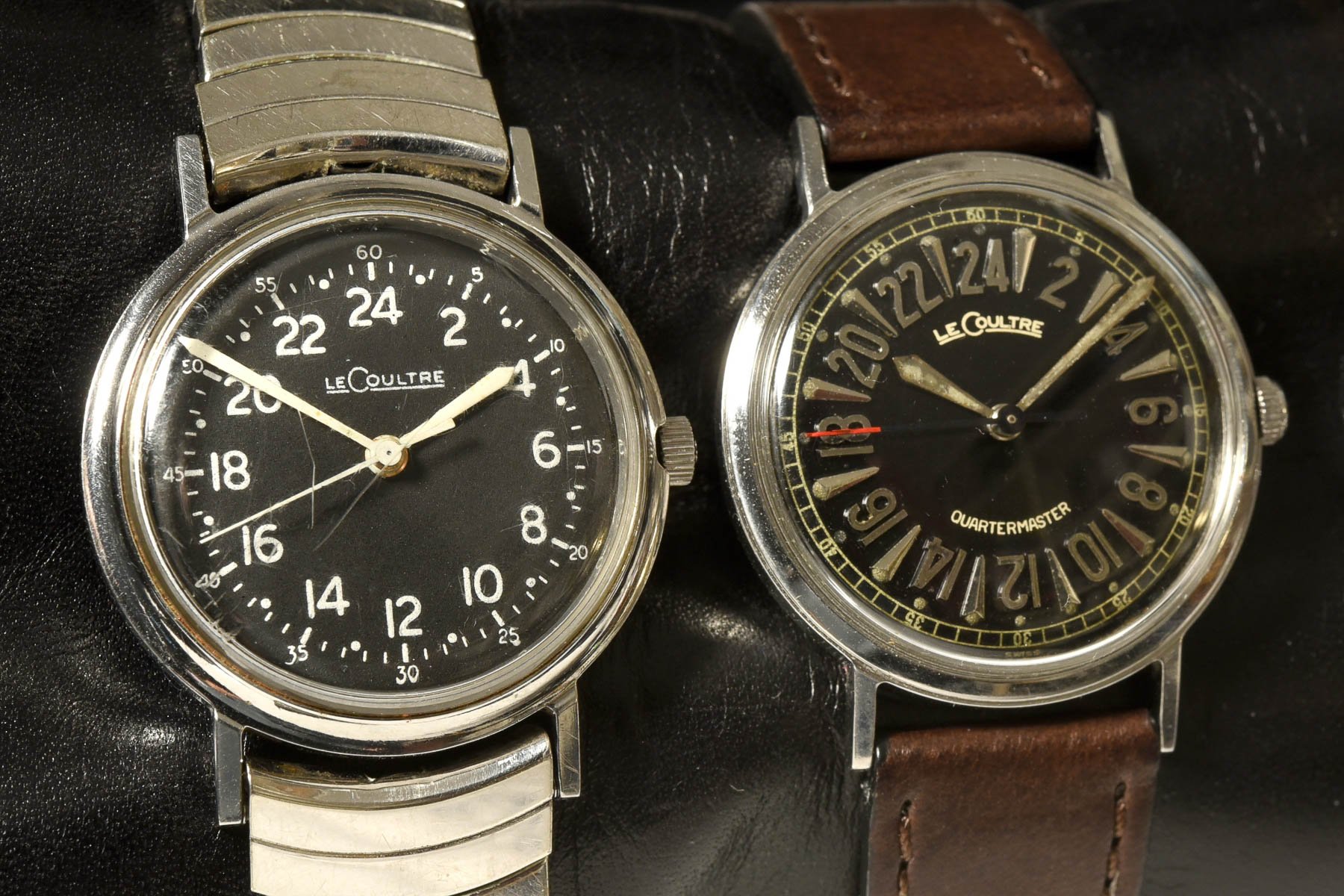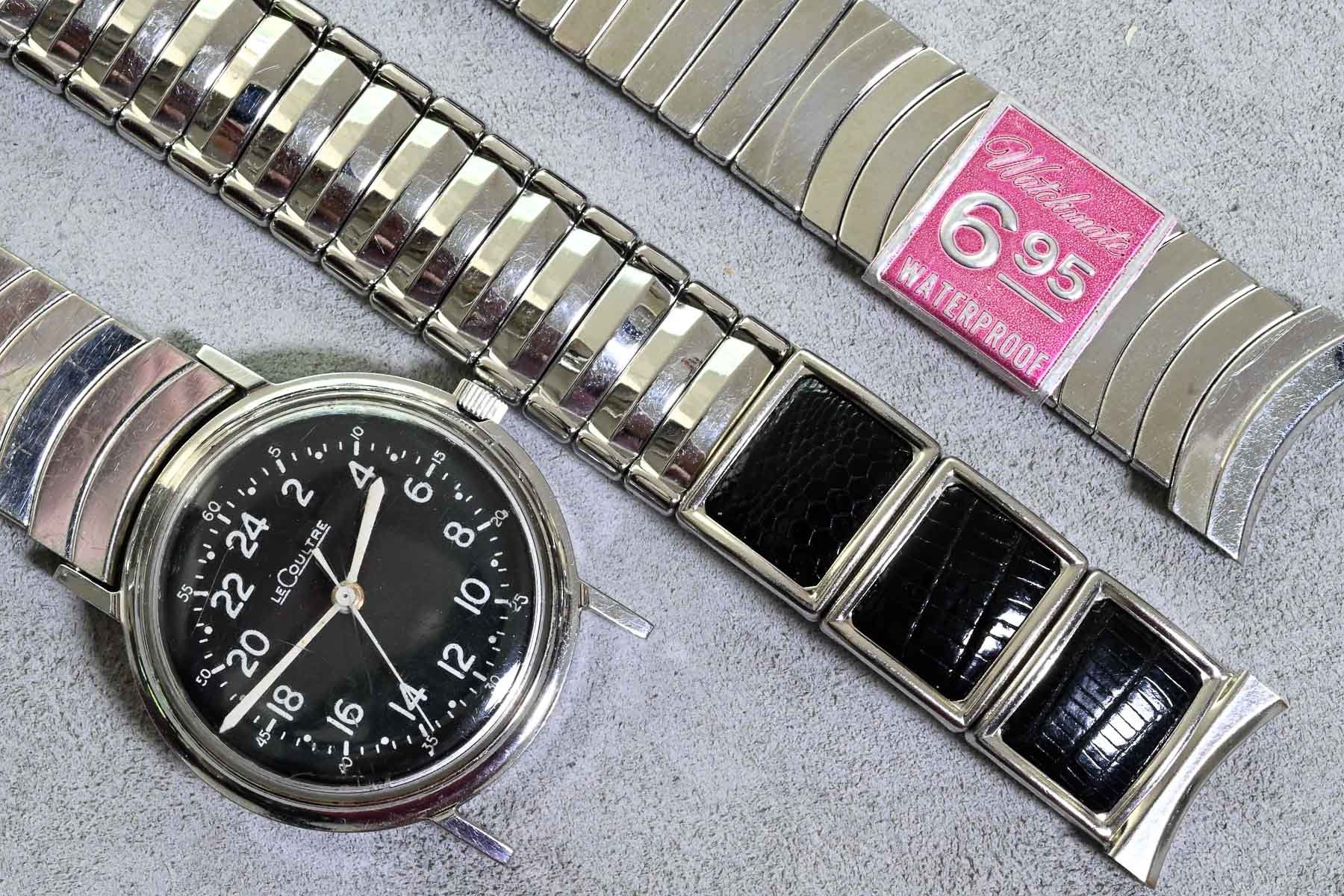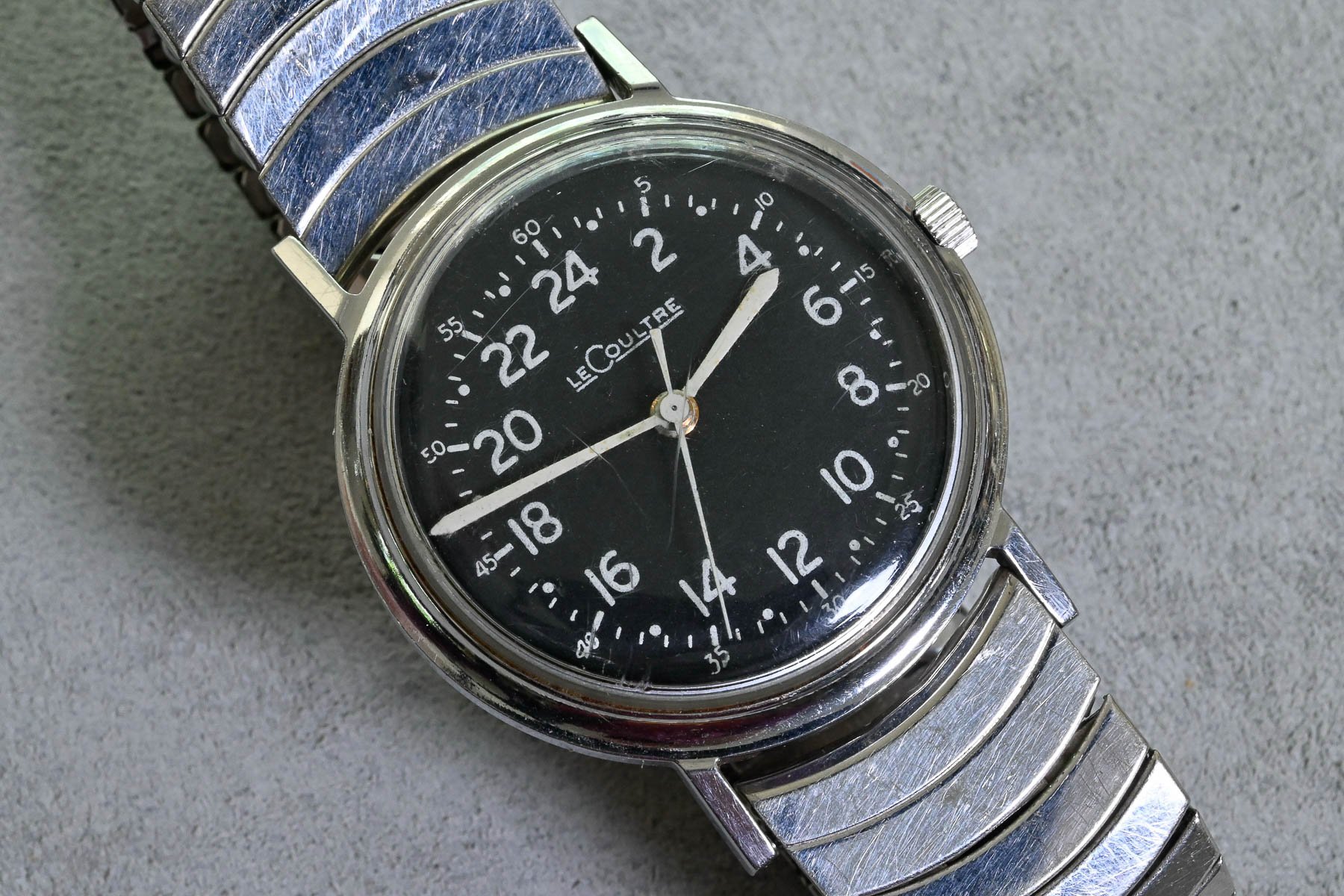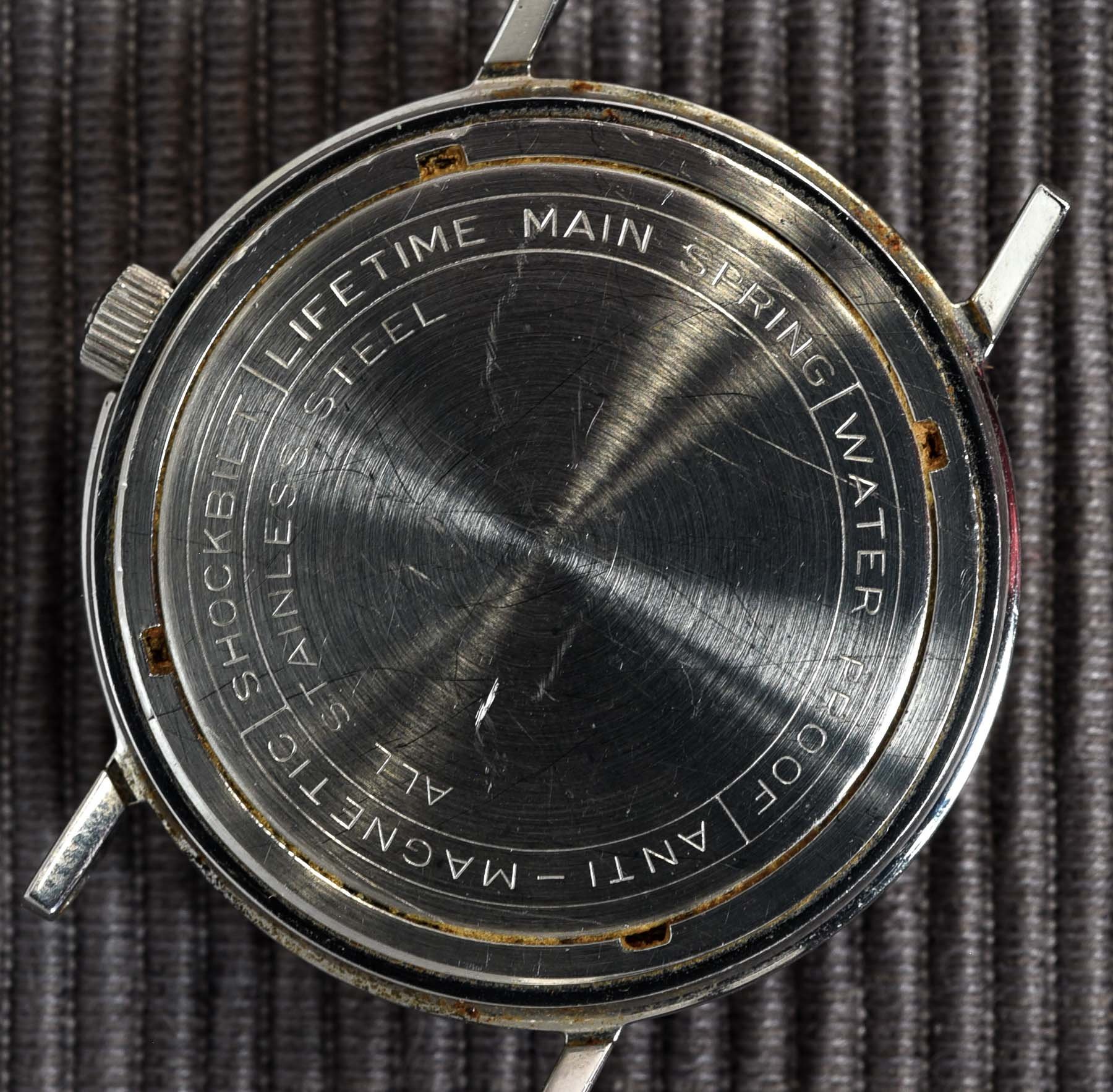The Very First Watch For Astronauts — LeCoultre 24 Hours
This year marks the 65th anniversary of the first watch officially issued to NASA. This watch, a LeCoultre, was based on an existing model (Quartermaster) but customized at NASA’s request. In this article submitted by space-watch buff (and author) Philip Corneille, you can read about this specially commissioned LeCoultre 24 Hours wristwatch. In the header image, you see Mercury astronauts Scott Carpenter, John Glenn, and Alan Shepard at Grand Bahama Island. Each is wearing a 24-hour LeCoultre astronaut watch. The picture was taken by NASA on May 7th, 1961.
The Right Stuff
On August 1st, 1958, the newly formed National Aeronautics and Space Administration (NASA) canceled the military Man In Space Soonest program and replaced it with Project Astronaut. However, in October 1958, President Eisenhower decided he preferred the name Mercury, the Roman mythical god of boundaries and travel and the messenger of the gods. On December 17th, 1958, the 55th anniversary of the Wright brothers’ first powered flight, NASA officially announced Project Mercury as the first human spaceflight program aiming to put a man in space before the Soviet Union did.
On November 5th, 1958, the NASA Space Task Group (STG) was formed under the leadership of American aerospace engineer Robert Gilruth. The group’s objective was to choose the company to build the one-man Mercury spacecraft, select prospective astronauts, and manage all aspects of Project Mercury. By January 1959, the McDonnell Aircraft Corporation had earned the contract to build the Mercury “capsule,” and President Eisenhower decided that only experienced military test pilots could volunteer as astronauts. Fast-forward to April 9th, 1959, at the NASA headquarters in Washington, DC, where NASA administrator Thomas Keith Glennan announced the nation’s Mercury astronauts alphabetically. Three were from the US Air Force, three from the US Navy, and one from the US Marine Corps.
“The Right Stuff” astronauts became known as the Mercury 7 and gained worldwide popularity as their private and family lives, training, and spaceflight missions were closely followed by radio, television, and news magazines. Project Mercury developed the initial technology for manned spaceflight missions with the original objective of orbiting an astronaut three times around the world and returning him safely to Earth.
An accurate 24-hour-dial watch
Without any communication satellites, NASA chose Western Electric Co., Inc. of New York as the prime contractor to equip and manage the construction of a worldwide network of ground stations to track, monitor, command, and communicate with the manned spacecraft. This network of 17 ground stations was controlled by computers in Maryland, which centralized data required for instantaneous board display to the Mercury Control Center at Cape Canaveral in Florida.
As early as September 1959, the NASA STG decided to equip each Mercury astronaut with a 24-hour-dial wristwatch. One reason was that the worldwide network of tracking ground stations spanning both hemispheres used the 24-hour Zulu time scale. Additionally, orbital Mercury flights were to last 3–22 orbits, totaling approximately 4–34 hours. During long-duration flights, orbiting Earth every 90 minutes, each astronaut would need a watch to instantly reference day/night time. NASA STG wanted an antimagnetic, waterproof wristwatch without radioactive lume, so the group looked at wristwatch brands that already had timepieces with a military-inspired 24-hour design. Ultimately, the choice for an astronaut’s wristwatch was a bespoke LeCoultre based on the black-dial Quartermaster.

The LeCoultre 24 Hours (from John Glenn) and LeCoultre Quartermaster side by side — Image: Jeff Stein
LeCoultre Quartermaster
Wristwatches like the LeCoultre Quartermaster, which displayed the time on a 24-hour scale, were originally designed for personnel (sailors, submariners, soldiers, etc.) working in closed environments without access to daylight. Using a legible 24-hour dial made it possible to instantly tell whether it was day or night.
NASA STG engineer Harold I. Johnson, a member of Flight Control Branch Training Aids, worked with the US branch of Jaeger-LeCoultre to design a bespoke version of the black-24-hour-dial LeCoultre Quartermaster. A US-market exclusive introduced in 1957, the Quartermaster was an exceptional military-inspired timepiece. It had a model-exclusive 24-hour movement, with the hour hand completing a single rotation around the dial per day rather than two. This reliable 17-jewel hand-wound caliber K831/CW operated at 18,000 vibrations per hour, sat in an antimagnetic case, and offered a 40-hour power reserve.
LeCoultre 24 Hours
The Mercury 7 astronauts’ version had a modified dial with white painted Arabic numerals for even hours and five-minute markers on a matte black background for maximum legibility. The white sword-shaped hour and minute hands and the straight seconds hand were devoid of any luminescent material. This was because NASA safety measures dictated that astronauts should avoid exposure to any radiation during training and actual spaceflights. Finally, a straight LeCoultre signature adorned the dial at the 12 o’clock position.

The bespoke LeCoultre watches came on two types of lightweight steel Jacoby-Bender stretch bracelets — Image: Jeff Stein
The watch had a modestly sized 33.5mm stainless steel case topped by a box-type acrylic (Plexiglass) crystal, significantly raised to improve readability. In addition, the watch featured a locking-ring case back to optimize water resistance.
By September 1959, NASA STG had procured eight black-dial LeCoultre 24 Hours watches on expandable steel bracelets and distributed them to the NASA Mercury 7 astronauts. The lightweight bracelets were US-made by Jacoby-Bender.

NASA astronaut Leroy “Gordo” Cooper in September 1959, checking out a Mercury capsule. Cooper, wearing the LeCoultre 24 Hours, was responsible for the Redstone launch vehicle.
Putting the watches through their paces on Earth
By 1960, all Mercury 7 astronauts were wearing these LeCoultre watches during daily life, astronaut training, and special events. However, they would eventually not wear them during actual spaceflight missions. In February 1961, NASA selected three of the Mercury 7 astronauts for special training to become the first US astronauts in space — USMC Lt. Col. John Glenn, USAF Capt. Virgil Grissom, and US Navy Lt. Cmdr. Alan Shepard. It’s no wonder, then, that these three became the most photographed Mercury 7 astronauts with the classy 24-hour-dial LeCoultre “astronaut watch” on their wrists. As of 2024, at least three of these bespoke LeCoultre watches (John Glenn’s, Walter Schirra’s, and Virgil Grissom’s) have sold at auction.

The specially designed (and heavily water-damaged) Breitling Navitimer Cosmonaute that Scott Carpenter wore
Other astronaut-worn watches
The Mercury spacecraft’s cockpit had a 24-hour “capsule satellite clock” with separate displays for “Time From Launch,” “Time To Retrograde,” and “Retrograde Time.” This fully mechanical clock was wound before launch, giving it a power reserve of 48 hours. Thanks to this, even a complete loss of electrical power in the spacecraft would not affect its timing function. The clock was set to Coordinated Universal Time (UTC), the time standard used in aviation, often called Zulu time.

NASA astronaut John Glenn studying constellations on a transparent globe in February 1962. Note the LeCoultre 24 Hours on the stretch bracelet.
Neither Alan Shepard nor Virgil Grissom wore wristwatches during their short 15-minute suborbital flights (MR-3 in May 1961 and MR-4 in July 1961, respectively). On February 20th, 1962, during the first orbital Mercury Friendship 7 mission, US Marine Corps Lt. Col. John Glenn was the first to wear a backup watch, and he chose a large Heuer 2915A stopwatch. Then, on May 24th, 1962, US Navy Lt. Cmdr. Scott Carpenter became the first NASA astronaut to wear a Swiss-made wristwatch in space. His timepiece of choice was the bespoke 24-hour-dial Breitling Navitimer Cosmonaute chronograph.
By that time, the American watch brand Bulova had issued all Mercury astronauts the “electronic” tuning-fork Accutron Astronaut watch, which Leroy Cooper wore on Faith 7 (May 1963) and astronauts Virgil Grissom and John Young wore on Gemini III (March 1965).
A flight-qualified chronograph
Finally, in September 1964, Chief of the Astronaut Office Donald Slayton expressed the need for an off-the-shelf, durable, and accurate chronograph for Gemini and Apollo astronauts to use. In March 1965, after four months of testing chronographs from different brands, NASA’s flight-safety office confirmed that only the Omega Speedmaster satisfied all flight-qualification requirements. By June 1st, 1965, the NASA Gemini program office had declared the Omega Speedmaster flight qualified for all manned space missions (see here). The watch would get this qualification again in 1978 for the Space Shuttle program.
With Project Mercury, both NASA and its contractors learned many lessons about procedures and techniques. However, the most significant lesson from the pioneering manned space programs was that man was still invaluable to the machine and that a non-critical secondary timing device on the wrist of a spacefarer could be a versatile tool.
The author thanks Jeff Stein of OnTheDash.com for sharing the photos of astronaut/senator John Glenn’s LeCoultre wristwatch.






